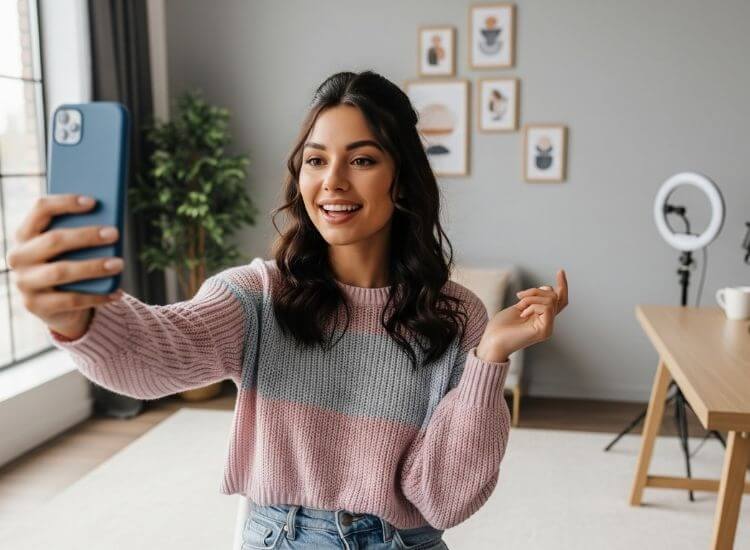



Instagram’s green screen filter has become one of the most powerful storytelling tools for creators. With more than 500 million people using Instagram Stories each day, standing out takes more than good lighting. It takes creativity, smart editing, and the right use of visual effects. The green screen feature helps you achieve all three.
This simple yet impressive filter lets you replace your background with any image or video, transforming an ordinary clip into a polished, cinematic piece. From tutorials and product demonstrations to fun short videos, learning how to use green screen on Instagram can elevate your content and make your visuals truly shine.

The green screen filter is an Instagram effect that uses chroma key technology, a visual editing method that replaces a solid-colored background—typically green—with a new image or video. This technique is widely used in film and television production to place subjects into different environments without physically being there.
On Instagram, the filter allows you to record videos or photos while positioning yourself in any virtual setting. You could appear on a tropical beach, in a digital studio, or inside a virtual office, all within the app. The feature works across Stories, Reels, and Posts, giving creators a simple way to produce dynamic, professional-quality visuals directly from their phones.
There’s no need for advanced gear or editing software. All you need is your smartphone, a well-lit space, and a clear background. The result is eye-catching content that looks professionally produced and ready to captivate your audience.

Even though the green screen filter does most of the heavy lifting, your setup still plays a crucial role in how natural and seamless your final video looks.
Here’s what to prepare before you start recording:
1. Optimize Your Lighting
Lighting can make or break your green screen video. Use soft, even lighting across your space to minimize harsh shadows. Natural daylight works great, but if you’re filming indoors, try using ring lights or softboxes.
2. Use a Smooth Background (Optional)
When recording against a physical green or blue screen, make sure it is wrinkle-free and evenly lit. However, if you’re using Instagram’s built-in digital filter, you only need a neutral wall or uncluttered space.
3. Keep the Frame Clean
A minimal setup keeps the focus on you. Avoid distracting objects or reflective surfaces that can confuse the app’s recognition of your outline.
4. Stabilize Your Phone
If you're making longer Reels or speak directly to the camera, use a tripod or a gimbal to get smoother pictures. This makes your backdrop overlay look solid and professional.

Instagram has updated its camera tools for 2025, making it easier than ever to access and use green screen effects—especially for Reels and Stories. Follow these updated steps:
Once satisfied, tap Next to add captions, tags, or audio. You can publish directly to Reels, Stories, or save it to your drafts for later.
Once you understand the basics, these creative and technical tips will help your green screen videos look more professional:
Explore more advanced ways to elevate your visuals. Discover new techniques and ideas in our guide on creative green screen.
Here’s how to fix common problems on a green screen:
After mastering the green screen filter on Instagram, you can explore tools that make recording and editing even smoother. Teleprompter.com app helps creators deliver their lines naturally and maintain eye contact with the camera, creating more confident on-screen performances.
It also includes a Replace Background feature that lets you swap green screen backgrounds with your own images. This gives you more control over your final visuals and makes it easier to create consistent, on-brand content. Combined with the app’s teleprompter tools, it simplifies the filming process and keeps your delivery clear and professional.
To produce videos that look refined and stay aligned with your creative vision, sign up at Teleprompter.com and explore how its features can support your recording setup.
The green screen effect isn’t just a fun trend—it’s a storytelling tool. It helps you:
Whether you’re a content creator, small business, or influencer, understanding how to use green screen on Instagram effectively helps you create memorable, high-quality content that resonates with your followers.
The green screen filter on Instagram opens up endless creative opportunities for content creators. It allows you to produce professional-looking videos with minimal equipment and encourages experimentation with different video backgrounds and visual styles. With attention to lighting, camera placement, and creative framing, your videos can feel both polished and personal.
To make the most of this feature, plan your shots carefully and align your visuals with your story. Use it to enhance your Instagram Reels, tutorials, and other forms of content creation that reflect your personality and purpose. For more inspiration on building your brand presence, explore our guide to Instagram post ideas for business.
With consistency and imagination, the green screen filter can help you share stories that stand out and connect with your audience.
Yes. When using the green screen filter, tap Add Media to upload your own photo or video. This lets you replace the background with visuals that fit your style or brand.
Open the Instagram camera, go to Reels or Stories, and tap the Effects icon. Search for “Green Screen,” select the filter, and tap Try It. Then add your background and start recording your video.
Use soft, even lighting across your setup and avoid direct shadows or bright light behind you. Adjust brightness and exposure until the background blends smoothly.
Yes. The Add Media option lets you upload your own image or video. You can even use branded visuals for a consistent look across your content.
Blurriness often comes from poor contrast between your clothing and the background. Avoid wearing green or reflective fabrics and ensure your lighting is balanced.
Yes. The feature works seamlessly across Instagram Reels, Stories, and even Feed posts, depending on how you choose to share your video.



